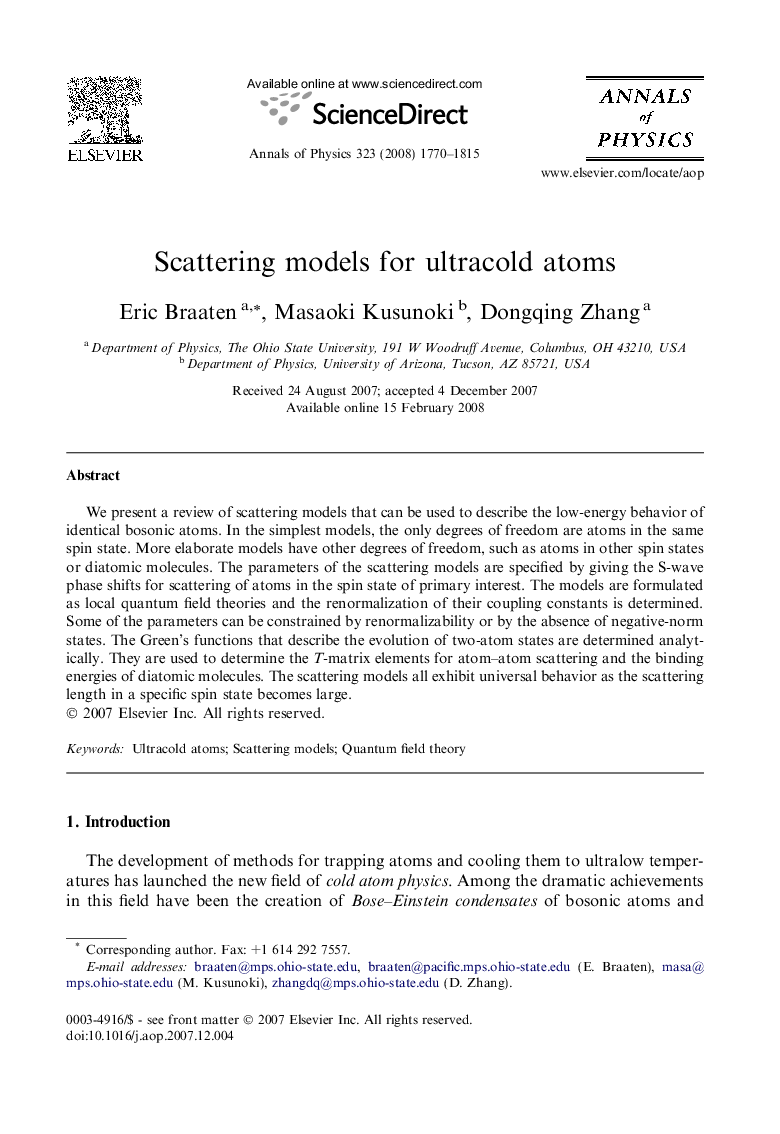| Article ID | Journal | Published Year | Pages | File Type |
|---|---|---|---|---|
| 1856881 | Annals of Physics | 2008 | 46 Pages |
We present a review of scattering models that can be used to describe the low-energy behavior of identical bosonic atoms. In the simplest models, the only degrees of freedom are atoms in the same spin state. More elaborate models have other degrees of freedom, such as atoms in other spin states or diatomic molecules. The parameters of the scattering models are specified by giving the S-wave phase shifts for scattering of atoms in the spin state of primary interest. The models are formulated as local quantum field theories and the renormalization of their coupling constants is determined. Some of the parameters can be constrained by renormalizability or by the absence of negative-norm states. The Green’s functions that describe the evolution of two-atom states are determined analytically. They are used to determine the T-matrix elements for atom–atom scattering and the binding energies of diatomic molecules. The scattering models all exhibit universal behavior as the scattering length in a specific spin state becomes large.
